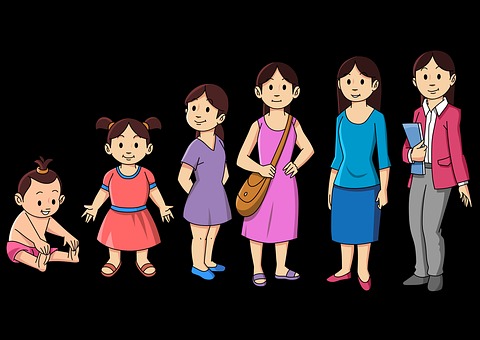One of the interesting things I like about psychology is its impact on personality development. I like how detailed the information is regarding mental illnesses, different treatment types, psychological analysis, and testing. I am fascinated by how science understands how the brain functions and malfunctions. Yes, there are quite a lot of things that seem impossible to fit in one category. But fortunately, everything has been handed out, and all of the data is insightful and well-thought of.
Speaking of psychology, I am now focusing my enthusiast on Erik Erikson’s theory. It is all about this psychosocial development. At first, I was hesitant to go deeper into it. But then I got interested in what psychosocial development contributes to my understanding of myself as an individual.
According to the psychosocial theory of Dr. Erik Erikson, everything that people experience over their lifespan from early years through late adulthood always includes the eight stages of development. And at each stage holds an important crisis or task that all individuals need to resolve. And when people complete each developmental task, it results in confidence, competence, and a healthy personality.
Below are couples of frequently asked questions that might help explain some significantly important details about Psychosocial Development to understand my point better.

Source: pixabay.com
What is a psychosocial crisis, according to Erikson?
Psychologist Erik Homburger Erikson explains the psychosocial crisis as a conflicting turning point where individuals face a struggle of exploring who they are as individuals. It is a specific psychological quality that involves identity versus role confusion, a time of vulnerability, and a person’s capability.
In a specific crisis, an individual struggles to attain a specific mental quality. That is because, on a specific stage of development, a person deals with understanding each behavior that correlates to social cognition. These changes improve the understanding that other people’s behavior is based on their desires and knowledge.
What is the 9th stage of psychosocial development?
In the ninth stage of psychosocial development added by Erik Erikson’s wife, Joan Erikson considers new challenges related to continued aging with or less desirable outcomes. It is particularly because of elders mistrust their ability due to a weakening body. The ninth stage specifies the incorporating aspects from all the previous eight stages of psychosocial development.
Additionally, the 9th stage of development is what Erikson describes as dystonic because the developmental stage often results in a less desirable outcome. Thus, people’s personality at this stage of development is more likely doubtful, and mistrustful, and many people will never admit they were wrong. In some instances, they also feel guilty about not having the ability to do what they once did.
What are the educational implications of Erikson’s theory?
Erikson’s developmental stages showed a comprehensive theory of personality-based self-organization. It is focused on developing a sense of personal control over independence and physical skills. Each psychosocial development stage corresponds to access to a structural level.
Is Erik Erikson’s theory still applied today?
Yes, Psychologist Erik Homburger Erikson’s work is as significant up until today, even after he initially outlined his original theory. It completes each stage, exploring development throughout life, including events of childhood, adulthood, and old age. It expanded the psychoanalytic theory, which explores a healthy personality and the acquisition of basic virtues.
Erik Erikson’s theory has always been accepted, and it gets to be recognized even more because our society has become increasingly mature. Thus, the needs have grown to understand the aged individual more carefully to address the issues that once were never given importance – life and mental and emotional maturity. Erikson’s perspective even more valuable and relevant compared to when the psychologist first projected it.
Why is Erik Erikson Theory important?
Psychologist Erik Homburger Erikson’s theory is important because it explains well-enough the person’s psychosocial development, from infancy to adulthood. In fact, it provides a broad framework from which to view development with the given modern pressures on society, family, and relationships. It emphasizes the social nature of human beings to the quest for personal growth and fulfillment.

Source: pixabay.com
How can you apply Erik Erikson’s theories in the classroom?
You can apply Erik Erikson’s theories in the classroom by providing a portion of the day for children to choose their preferred activities. You can start by breaking the instruction and activities down into small steps. You can also have a classroom library that allows children to pick their books during reading time. This method helps promote children’s decision-making ability.
Why is Erik Erikson Theory important for teachers?
Psychologist Erik Homburger Erikson’s Theory is essential for teaching to ensure that students at the different grade levels will attain mastery of each stage in Erikson’s theory without conflict. It will exhibit the teacher’s positive response for the students, especially in their interest, while maintaining confidence in their ability.
What is a psychosocial theory?
Psychologist Erik Homburger Erikson’s Psychosocial theory is concerned with the correlation between individual subjectivities and identities to support understanding in other people’s behavior based on knowledge and desires. It also focuses on individuals’ thoughts and behavior that influences historical and contemporary social and political formation.
What are the educational implications?
The educational implication refers to the role of environment, curriculum, materials, and instructions that individuals need for growth and development. These educational implications cater to the student’s physical and cognitive abilities and their social and emotional needs.
What are the strengths of Erikson’s theory?
Erikson’s theory’s fundamental strengths emphasize human beings’ collective nature, which involves how they think, react, and behave to everything socially around them. It influences development on the challenge of social relationships and how it impacts necessary cognitive functioning, decision-making, and critical thinking.
The psychosocial theory provides a broad framework that helps people view development throughout the entire lifespan. It also allows individuals to emphasize and value human beings’ social nature and the significant influence that relationships have on development.
What are the eight developmental stages of human life?
Erikson’s eight psychosocial development stages are Trust vs. Mistrust, Identity vs. Role Confusion, Intimacy vs. Isolation, Ego Integrity vs. Despair, Initiative vs. Guilt, Industry vs. Inferiority, Autonomy vs. Shame and Doubt, and Generativity vs. Stagnation.
What is not one major difference between Erikson’s theory and Freud’s theory?
While Freud’s ideas influenced him, Erikson’s psychosocial theory is based on environmental and social factors, while Freud’s psychosexual theory highlights the importance of fundamental and biological needs. Erikson also extends his approach into adulthood, while Freud’s theory ends at an initial period.

Source: pixabay.com
What are the seven stages of development?
The lifespan development includes prenatal development, infancy and toddlerhood, early childhood, middle childhood, adolescence, early adulthood, middle adulthood, and late adulthood.
How do you remember Erikson’s stages?
To quickly memorize Erikson’s psychosocial theory, you can utilize mnemonic. It is a process of looking out for things that can be used as a formula or rhyme to aid in recollection.
What are the key concepts of Erikson’s theory?
Erikson’s theory’s key concepts consist of eight stages of development, are, in no particular order, Trust versus mistrust; Intimacy versus isolation; Initiative versus guilt; Autonomy versus shame and doubt; Generativity versus stagnation; Industry versus inferiority; Identity versus identity confusion, Integrity versus despair.


